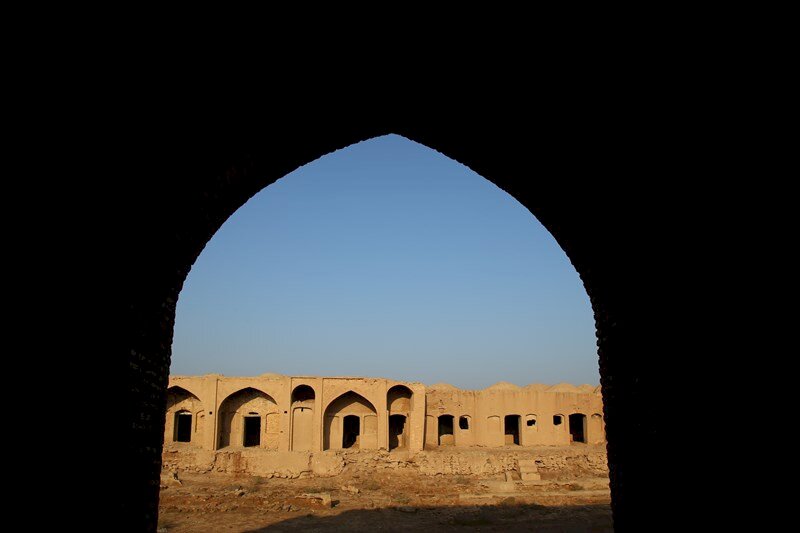Qajar-era caravanserai restored to hay-day state

TEHRAN – The second phase of a restoration project on the Qajar-era (1789-1925) Alborz Caravanserai in the central province of Qom, has come to an end, the deputy provincial tourism chief has announced.
Parts of the caravanserai were destroyed due to heavy rain showers, so an urgent restoration of this historical monument seemed necessary, Ammar Kavusi said on Wednesday.
A budget of 3.2 billion rials (76,000 at the official exchange rate of 42,000 rials per dollar) was allocated to the project, the official added.
The main building material for the Alborz caravanserai is brick, and stone has been used in the substructure, he noted.
Considering the popularity of traditional buildings, reviving these buildings into recreational and tourist centers while preserving their past identity will boost the prosperity of tourism, he explained.
Located in the central district of Qom province, the caravanserai was registered on the national heritage list in 2004.
Iran has put forward a selection of 56 caravansaries as a candidate for a collective inclusion in UNESCO’S cultural heritage list.
Caravansary (also Caravanserai or Caravansaray) is a building that served as the inn of the Orient, providing accommodation for commercial, pilgrim, postal, and especially official travelers.
According to Encyclopedia Iranica, from the number of surviving caravansaries and their sizes, it is clear that in Safavid and Qajar times there was a state architectural department that was specifically concerned with the construction of caravansaries and stations on the overland routes. Furthermore, in the cities, several caravansaries were erected as lodging houses, depots, and commercial offices in the vicinity of the bazaars.
A typical caravansary consists of a square or rectangular plan centered around a courtyard with only one entrance and arrangements for defense if necessary. Whether fortified or not, it at least provided security against beasts of prey and attacks by brigands.
Iran’s earliest caravanserais were built during the Achaemenid era (550 -330 BC). Centuries later, when Shah Abbas I assumed power from 1588 – to 1629, he ordered the construction of network caravanserais across the country.
Such roadside inns were originally built during various epochs along ancient caravan routes in the Muslim world to shelter people, their goods, and animals. The former Silk Roads may be the most famous example dotted by caravanserais.
Situated adjacent to salt-covered deserts, golden dunes, running sands, and jagged mountains, Qom is home to the shrine of Hazrat-e Masumeh (SA) and major religious madrasas (schools).
Apart from sightseers and pilgrims who visit Qom to pay homage, it is also a top destination for Shia scholars and students who come from across the world to learn Islamic studies at its madrasas and browse through eminent religious bookshops.
One of the most visited natural spots of Qom is Hoz-e Soltan, an eye-catching salt lake is in the middle of the desert. The visitors could easily walk in the shallow parts and enjoy the shapes created by the salt, however, the center of the lake could be dangerous, as it is muddy and could easily trap people.
ABU/AFM

Leave a Comment